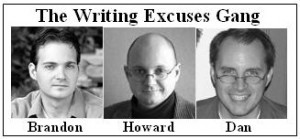What’s the best predictors of which nations are most likely to go to war or exhibit instability?
Up until now these three factors were assumed to be the most predictive: poverty levels, lack of democracy, and the nation’s adherence to Islamic values. However, Valerie Hudson and the folks of WomanStats have found a fourth factor that is a better predictor:
These results indicate that if a scholar or policymaker had to select one variable—level of democracy, level of wealth, prevalence of Islamic culture, or the physical security of women—to assist them in predicting which states would be the least peaceful or of the most concern to the international community or have the worst relations with their neighbors, they would do best by choosing the measure of the physical security of women.
I found it interesting that their research indicates of all the predictors prevalance of Islamic culture is the weakest. So much for the idea that Islam is the bogey man.
Before presenting their findings, they make a theoretical case by synthesizing insights from evolutionary biology and psychology, political sociology, and psychology. When summarizing the ideas from evolution, they state:
Evolutionary theory suffers from two common misconceptions. The first is that evolutionary predispositions are intractable. No evolutionary theorist believes this. Richard Dawkins explains, “It is perfectly possible to hold that genes exert a statistical influence on human behavior while at the same time believing that this influence can be modified, overridden, or reversed by other influences.” The second misconception is that evolutionary theory posits static and essential characteristics for males and females. This has been debunked as well. In debunking this myth, Theodore Kemper notes, “Across the spectrum of the social sciences, the results show that females are not essentially pacific, retiring, unaggressive, lacking in motives and psychological need for power and dominance. While successful ideological socialization may persuade many women that this is true of themselves, it is not biologically true.”
These misconceptions are very interesting indeed and should be remembered when examining genetic based arguments for all sorts of behavior. When they discuss social learning theory from psychology, they reiterate this point:
First, social learning psychologists argue that biology does increase the likelihood that a child will engage in aggressive or violent behavior, but does not guarantee it. For example, twin and adoption studies find that genes make a small contribution to various forms of antisocial behavior compared to environmental factors. For example, while finding that having a biological parent who was antisocial increased the risk for antisocial behavior to be seen in an adopted child, these same studies also demonstrated that having a disrupted home environment contributed more significantly to the risk for a child to engage in antisocial behavior.
They then discuss specific environmental factors that lead to violent behavior against women. It’s a fascinating article. I highly recommend it. You can find the original, “The Heart of the Matter: The Security of Women and the Security of States,” in Harvard university’s International Security, volume 33, issue 3.
Okay, okay, so how do the countries rank? Here’s a summary from the Deseret News:
A WomanStats map reveals highest levels of women’s physical insecurity in the Middle East, India, much of Africa, Brazil and Mexico. On a Violence Against Women scale, the United States sits smack dab in the middle, at a level 3 on a 5-point scale, with moderate levels of domestic violence and rape.















